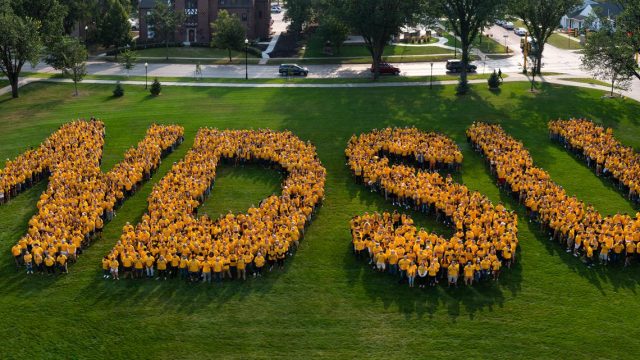If North Dakota’s Universities Are in a “Death Spiral” It’s Not From Lack of Public Funding

There is a popular myth in North Dakota, one particularly acute among those work in our state’s public university system, which holds that the universities are being choked to death by stingy state policymakers.
Back in September, Sheila Liming, an Assistant Professor in the English Department at the University of North Dakota, wrote an article for the Chronicle of Higher Education arguing that her institution is “dying.” She blamed budget cuts.
Today, in the Fargo Forum, Adam Goldwyn, an associate professor of English at North Dakota State University, made a similar argument. He said our state’s public universities are in a “death spiral.” He, too, blames budget cuts:
This is what the death spiral of a public university looks like: lowered state support degrades the quality of the university, which results in fewer students attending, which results in both less tuition revenue and, because the legislative formula for state appropriations is based on the number of students, results in less appropriated state money in the next legislative session. Repeat as necessary.
I can understand Goldwyn’s apprehension. Despite myopic sports fans insisting that football championships boost student recruitment (they don’t), NDSU’s enrollment has been dropping, and the only thing in the forecast is more decline.
But where Goldwyn, and others articulating his line of argument, go off the rails is their insistence that more state spending on the state’s university system will reverse this trend in enrollment (which, by the way, is not limited in the state to NDSU).
The very real arithmetic of the state’s budgets simply doesn’t bear that out.
This chart, put together with data from Legislative Council, shows the last two decades of higher education budget and enrollment trends:

- General fund appropriations to North Dakota’s universities have increased more than 70 percent since the 2001-2003 biennium.
- Even accounting for post-oil boom cuts, in the last decade, appropriations have averaged a 4 percent increase every two-year budget cycle, for a more than 11.5 percent increase over ten years.
- Despite a 70 percent increase in spending, enrollment has grown less than 11 percent since 2001-2003.
- In the last decade, enrollment growth has averaged less than 1 percent per two-year budget cycle.
- Current projections forecast a 1.2 percent decline in university system enrollment in the current 2019-2021 cycle.
Put simply, the cost to taxpayers of North Dakota’s university system has been growing significantly faster than enrollment. What’s more, Goldwyn’s argument – that increasing appropriations will reverse declining enrollment trends – isn’t supported by the data. Aggressive increases in appropriations to the state’s universities, starting in 2003 and culminating with an oil-boom-driven spike in 2013-2015, certainly didn’t result in a corresponding spike in enrollment.
I’ll not defend the Legislature’s budget when it comes to higher education. Lawmakers spiked general fund spending, both on higher education and elsewhere when a boom in oilfield activity was driving tidal waves of revenues into state coffers. Higher education officials happily went along for the ride, making big-budget asks and mostly getting them.
This was folly. The thing about oil booms is they don’t last forever. If those working in higher education are feeling some whiplash, with budgets growing and then shrinking by hundreds of millions of dollars over the course of just a few years, we can hardly blame them for it. Their criticism of state officials on that front is apt.
But to suggest, as Goldwyn does, that state leaders are somehow choking our public universities to death, is simply inaccurate. Even despite the ill-advised oil boom spike-and-cut in budgets, our state has consistently grown higher education spending faster than student enrollment for decades now.
“[T]he only solution is for North Dakotans to vote with their ballot for anyone who will pull the university out of the death spiral,” Goldwyn writes. Yet our current lawmakers have spent lavishly on higher education. In fact, when the oil boom made a lot of excess revenues available, they almost literally threw it at the universities.
That hasn’t proven to be a wise policy. More of the same isn’t likely to make it sensible.
Enrollment declines at the public universities probably have less to do with local budget decisions than they do with national trends in higher education, which have many current and future students questioning the bang-for-the-buck they’re getting from these institutions, for excellent reasons.




